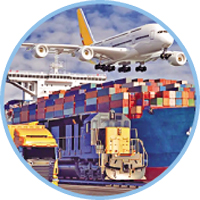 With the 13th WTO Ministerial Conference (MC13) knocking at the door, the Aid for Trade programme, a pivotal initiative introduced nearly two decades ago to aid developing countries, appears to lack a sense of urgency. Originating from the 2005 WTO Ministerial in Hong Kong, the programme was designed to enhance the coordination of existing trade support initiatives and mobilise extra resources. Its stated objectives were to help developing nations bolster their supply capacity and trade-related skills, enabling them to adapt to the challenging and unequal trading landscape.
With the 13th WTO Ministerial Conference (MC13) knocking at the door, the Aid for Trade programme, a pivotal initiative introduced nearly two decades ago to aid developing countries, appears to lack a sense of urgency. Originating from the 2005 WTO Ministerial in Hong Kong, the programme was designed to enhance the coordination of existing trade support initiatives and mobilise extra resources. Its stated objectives were to help developing nations bolster their supply capacity and trade-related skills, enabling them to adapt to the challenging and unequal trading landscape.
For more than four decades, the UNCTAD has been promoting an integrated approach to aid and trade in support of lasting developmental gains, especially for the Least Developed Countries (LDCs). Indeed, UNCTAD`s efforts to establish a sizable (0.7 per cent) aid target for the international community derived from an effort to link a growth target in developing countries, a complementary investment push to support structural transformation and persistent balance of payment constraint facing many of these countries.
In recent years, discussion has been refocused around the idea of Aid for Trade. Aid for Trade is seen as the main multiagency apparatus for addressing supply side and institutional constraints that restrict developing countries from increased participation in the international trading system. As such, it has become a key component of international Official Development Assistance (ODA).
However, as a percentage of total ODA, Aid for Trade to LDCs represented, on average, less than 20 per cent, whereas the share of the non-LDCs reached almost 30 per cent. The increase in Aid for Trade flows should be assessed with caution, given that the programme includes previous aid flows which were not labelled as such. It offered an opportunity for donors and recipient countries to examine whether Aid for Trade and its related programmes are helping developing countries, particularly the LDCs, to overcome trade and productive capacity constraints.
According to the WTO/OECD database, Aid for Trade is mostly disbursed to productive capacity-building projects and trade-related infrastructure. Until 2009, transport and storage, energy, and agriculture accounted for 80 per cent of Aid for Trade resources, which were identified by LDCs as priority areas, reported in the Aid for Trade evaluation survey. At the same time, support for trade policies and regulation has been marginal and non-existent for adjustments linked to liberalisation commitments. Neglect to these areas is hampering efforts to move the initiative forward.
As regards the performance of the programme so far, two key observations have been noted by the UNCTAD:
• LDCs have high expectations of what Aid for Trade should achieve but, to date, the programme has fallen short in key areas.
• Aid for Trade should continue to provide resources to expand LDC exports and build up their productive sectors through better infrastructure and policy frameworks.
As part of the Aid for Trade agenda, the international community has also called for making the Integrated Framework (IF) a multi-donor programme in support of tailoring trade policy to local development circumstances and related technical assistance for LDCs more effective. However, expenditures emanating from IF and the subsequent Enhanced Integrated Framework (EIF) only represent a marginal share of the aid inflows.
How effective has Aid for Trade been from the LDCs' perspective? In a global review, recipient countries were asked to rate the success of Aid for Trade in their own countries along twelve broad criteria. The results show that there is consensus amongst LDCs that the programme should include greater resources, support export diversification, enhance the profile of trade in development strategy, reduce poverty, and promote economic growth. Most of the 'success' criteria in the questionnaires were rated either as 'most important' or as 'important'. Only 'greater environmental sustainability' and 'gender equality' were ranked somewhat lower.
Interestingly, four out of 28 LDCs reported poverty reduction as 'less important' and one as 'not important'. However, it is not clear from the responses whether this reflects 'shorttermism', the general belief that Aid for Trade is not directly linked to poverty reduction, or simply an indication of priorities.
Turning to the perceived results of Aid for Trade, by use of the same criteria, the emerging picture is mixed. LDC responses suggest that Aid for Trade should not be a hostage to the single undertaking of the Doha Development Round. A new international development architecture for the LDCs should shift the focus from aid to development by overcoming financial constraints to desired growth in LDCs and promoting domestic resource mobilisation. To bring the desired results, the programme should be directed to fulfil its objective in a precise manner, and should include: enhanced understanding of trade; increased profile of trade in development strategy; more harmonised and aligned Aid for Trade projects and programmes; increased Aid for Trade resources; increased exports; increased trade; diversified exports; increased economic growth; reduced poverty; greater environmental sustainability; greater gender equality.
As has been observed by most of the countries meant to benefit from the programme, whatever funds have flowed are basically repackaging of aids--not precisely targeted to meet the aforementioned objectives. In order to render the programme useful, taking up country-specific projects in specific fields would have made sense.
© 2024 - All Rights with The Financial Express
